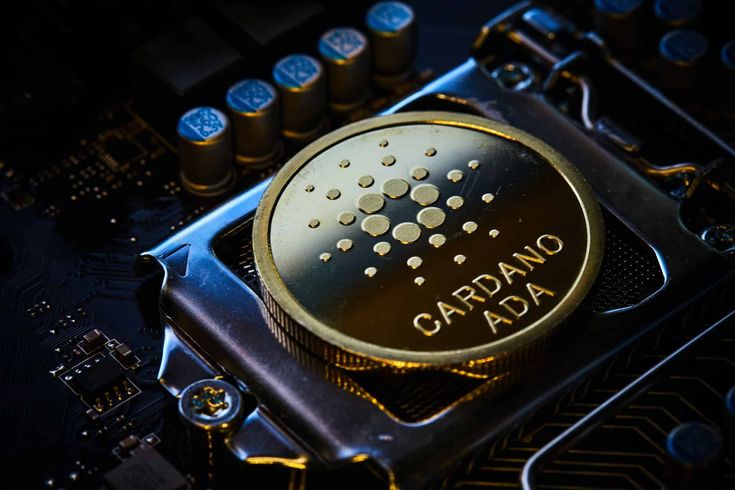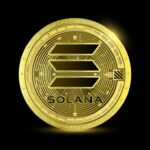Introduction
Cardano (ADA) is a blockchain platform that has garnered considerable attention since its inception due to its unique approach to decentralization, scalability, and sustainability. As one of the top cryptocurrencies by market capitalization, Cardano aims to solve many of the challenges faced by earlier blockchain platforms like Bitcoin and Ethereum.
Founded by Charles Hoskinson, one of the co-founders of Ethereum, Cardano uses a research-driven approach to design its blockchain, ensuring that it addresses key issues such as energy efficiency, scalability, and security. In this article, we will dive into Cardano’s history, its impact on daily life, and its growing significance in the cryptocurrency world.
What is Cardano (ADA)?
Cardano (ADA) is a third-generation cryptocurrency that aims to provide a more secure, sustainable, and scalable solution compared to older cryptocurrencies like Bitcoin and Ethereum. Developed by the company IOHK (Input Output Hong Kong), Cardano uses a unique proof-of-stake (PoS) consensus mechanism called Ouroboros. This method consumes significantly less energy than Bitcoin’s proof-of-work (PoW) system, making Cardano an eco-friendly alternative in the world of blockchain technology.
ADA is the native cryptocurrency of the Cardano blockchain. It serves as a medium of exchange, a store of value, and a staking asset for securing the network and validating transactions. ADA is traded on various cryptocurrency exchanges and can also be used in decentralized applications (dApps) built on the Cardano blockchain.
The History of Cardano (ADA)
The story of Cardano began in 2015 when Charles Hoskinson left Ethereum due to differences in vision for blockchain development. Hoskinson, along with his team at IOHK, began working on Cardano, with the goal of building a blockchain platform that prioritized academic research and peer-reviewed design.
Cardano launched its mainnet in 2017, and it introduced the ADA token to the world. Over the years, the Cardano blockchain has gone through several stages of development, including the Byron, Shelley, and Goguen eras. Each phase has focused on different aspects of blockchain technology, such as decentralization, scalability, and smart contract functionality.
The most recent upgrade, the Alonzo hard fork in 2021, introduced smart contract functionality to the Cardano network, allowing developers to build decentralized applications (dApps) on the blockchain.
How Cardano (ADA) Impacts Daily Life
Cardano’s impact on daily life can be felt in multiple ways, especially as it becomes more integrated into various industries and sectors. Here are some of the ways Cardano is changing the way people interact with the world:
- Sustainability and Eco-friendliness: One of the key impacts of Cardano is its use of the Ouroboros proof-of-stake consensus. Unlike Bitcoin’s energy-intensive proof-of-work model, Cardano’s PoS model is significantly more energy-efficient, helping reduce the environmental impact associated with cryptocurrency mining.
- Affordable Financial Services: Cardano’s blockchain aims to provide financial services to underserved populations around the world. Through partnerships with governments and organizations, Cardano aims to help deliver affordable financial services to people in developing countries who may not have access to traditional banking infrastructure.
- Decentralized Applications (dApps): The introduction of smart contracts on the Cardano network has paved the way for the development of dApps. These applications run on the blockchain and allow users to engage in financial services, voting systems, and other decentralized activities, all without relying on centralized authorities or intermediaries.
- Blockchain in Education and Healthcare: Cardano is also focusing on the potential uses of blockchain technology in fields like education and healthcare. For instance, Cardano’s secure and transparent ledger can be used to store educational credentials, certificates, and healthcare records, making them more accessible and immutable.
- Staking Rewards and Network Security: ADA holders can stake their tokens to participate in the Cardano network’s security and governance. By staking their tokens, users can earn rewards while helping secure the network, ensuring that transactions remain trustworthy and reliable.
Fun Facts About Cardano (ADA)
- Academic Foundations: Cardano is unique among cryptocurrencies because it is built on extensive academic research. The team behind Cardano has worked with researchers from universities around the world to design and build a blockchain that is both secure and scalable.
- Ouroboros Protocol: Cardano’s Ouroboros proof-of-stake consensus algorithm is the first PoS protocol to be mathematically proven to be secure, providing a solid foundation for the Cardano blockchain.
- Focus on Interoperability: One of the goals of Cardano is to improve interoperability between different blockchains. Cardano is working on solutions that allow different blockchains to communicate and share data seamlessly, enhancing the overall efficiency of the cryptocurrency ecosystem.
- Cardano’s Roadmap: Cardano’s development is guided by a detailed five-phase roadmap, which includes Byron, Shelley, Goguen, Basho, and Voltaire. Each phase is designed to bring specific improvements to the platform, with Basho focusing on scalability and Voltaire focusing on decentralized governance.
- Charles Hoskinson’s Vision: Charles Hoskinson’s vision for Cardano is to create a decentralized financial system that is open, secure, and accessible to everyone. His goal is to make blockchain technology available to the unbanked and to provide a more equitable financial system for the global population.
Frequently Asked Questions (FAQs)
- What is Cardano (ADA) used for? Cardano (ADA) is used as a store of value, a medium of exchange, and a staking token within the Cardano ecosystem. It powers decentralized applications (dApps) and helps secure the network through its proof-of-stake system.
- How does Cardano (ADA) work? Cardano uses a proof-of-stake consensus mechanism called Ouroboros to validate transactions and secure the network. ADA holders can participate in staking, which helps validate blocks and maintain network integrity.
- What makes Cardano different from Bitcoin and Ethereum? Unlike Bitcoin and Ethereum, Cardano uses proof-of-stake rather than proof-of-work, making it far more energy-efficient. Cardano also focuses on academic research and peer-reviewed design, ensuring its platform is built on solid scientific principles.
- Can I stake Cardano (ADA)? Yes, ADA holders can participate in staking by delegating their tokens to a staking pool. In return, they earn rewards for helping to secure the network.
- Where can I buy Cardano (ADA)? ADA is available on many major cryptocurrency exchanges, including Binance, Coinbase, and Kraken. You can buy ADA using various payment methods, including credit cards, bank transfers, and other cryptocurrencies.
Cardano’s Significance to Society
Cardano’s impact extends beyond just cryptocurrency enthusiasts. It has the potential to change the way we think about decentralized finance and the application of blockchain technology in everyday life. Here are some of its key contributions to society:
- Empowering the Unbanked: By providing decentralized financial services, Cardano aims to bring banking services to those who are excluded from the traditional banking system. This can significantly improve the financial inclusion of people in underbanked regions.
- Sustainable Blockchain Solutions: Cardano’s eco-friendly approach to blockchain through proof-of-stake is an important step toward reducing the carbon footprint of cryptocurrency. This aligns with global goals for sustainability and climate change mitigation.
- Improved Governance: Through its Voltaire phase, Cardano is aiming to create a decentralized governance system where ADA holders can participate in the decision-making process, ensuring that the network evolves in a community-driven manner.
- Secure and Transparent Systems: Cardano’s use of blockchain technology for sectors like education and healthcare helps ensure that important data is stored in a secure, immutable, and transparent way. This can improve trust in various industries and reduce fraud.
Conclusion
Cardano (ADA) is making waves in the cryptocurrency space with its unique approach to decentralization, sustainability, and scalability. Its research-driven development, eco-friendly consensus mechanism, and focus on real-world use cases make it a standout player in the blockchain ecosystem. As the Cardano network continues to evolve, ADA has the potential to not only change the future of cryptocurrency but also positively impact industries such as finance, education, and healthcare.
By staying true to its vision of providing secure, sustainable, and scalable blockchain solutions, Cardano is well-positioned to play a pivotal role in the future of decentralized finance and digital innovation.










